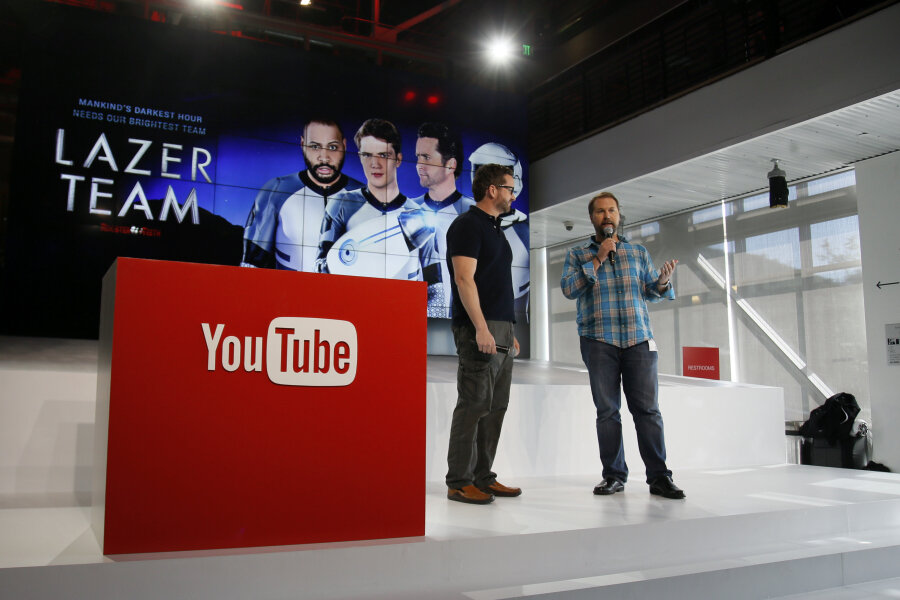With YouTube Red, Google pivots from ads to paid subscriptions
Loading...
YouTube brought in more than $4 billion last year in revenue, thanks to short advertisements that run before many videos. But the Google-owned company thinks that many viewers would be willing to pay a few dollars a month for ad-free watching and listening.
On Wednesday, Google announced YouTube Red, a $9.99-per-month subscription service that will let users watch unlimited videos without ads, save videos for offline viewing, and confer other benefits. The new service moves YouTube closer to being a competitor with Netflix and even, in some ways, with streaming music services such as Spotify and Apple Music.
YouTube is already far and away the most popular media site – as Forbes points out, popular songs may be streamed millions of times on Spotify, but their music videos routinely get 10 times that many views on YouTube. Almost everyone knows how to use YouTube, and the company predicts that means they’ll be more likely to subscribe to YouTube Red than to a competing service that isn’t as well-known.
For a penny under $10 per month, users will have all ads stripped out of videos on YouTube and YouTube Gaming, the relatively new video game streaming service that competes with Twitch.TV. The subscription will also cover Google Play Music’s All Access service, which allows streaming from a catalog of millions of songs, similar to Spotify.
The subscription works in reverse, too: users who pay for Google Play Music All Access will get YouTube Red automatically. YouTube will also partner with some popular content creators to make some content that is available only to Red subscribers.
Finally, YouTube Red subscribers who are using the app on an iPhone, iPad, or Android device will be able to listen to music when the screen is turned off or another app is in the foreground, something that wasn’t supported until now. There are plenty of videos that wouldn’t make much sense without actually being able to see them, but if YouTube is your main source for music videos or soundtracks you’d be able to make use of this feature.
YouTube will continue to offer free ad-supported videos, although TechCrunch’s Josh Constine points out that the top “partner” video creators must agree to sign a new revenue-sharing deal for YouTube Red or have their videos hidden from both paying and non-paying users. Google says the deal is so that users won’t have to worry about popular content not being available on the subscription service.
YouTube Red is a complement to, rather than a replacement for, the company’s existing ad-supported business model – and there’s no way of predicting how many users will sign up for the service. But with the introduction of a subscription service, YouTube’s focus shifts slightly as it begins trying to convert casual watchers into paying customers.








